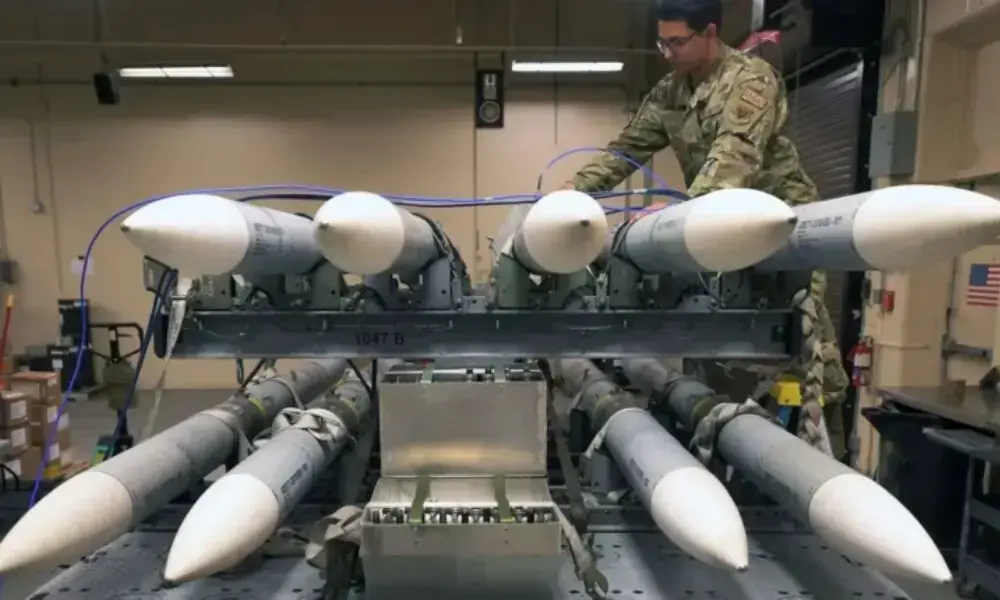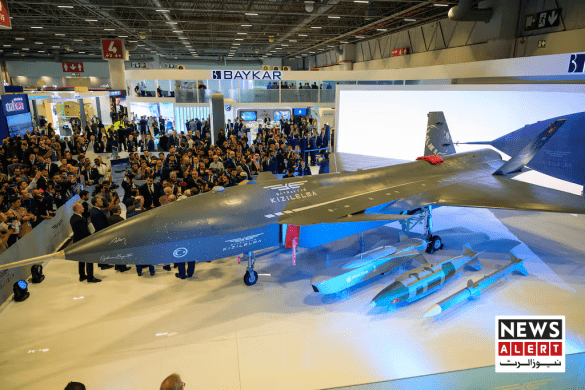What the approval covers
According to reports, the U.S. amended a Raytheon purchase list.
As a result, Pakistan will be included among prospective buyers.
The proposed deal’s value rose slightly. It moved from about $2.47 billion to roughly $2.5 billion, the reports noted.
The package is said to cover the AIM-120 family of beyond-visual-range missiles. These are produced by Raytheon and can be integrated into modern fighter aircraft. The list of other potential recipients includes Britain, Germany, Poland, Finland, Australia, Romania, Qatar, Oman, South Korea, Greece, Switzerland, Japan, Saudi Arabia, Italy, Norway, Kuwait, Spain, the Netherlands, Canada and others.
Weapon capabilities and technical notes
The AIM-120 AMRAAM is a radar-guided, beyond-visual-range missile.
It is designed to engage targets at long distances.
It can operate in adverse weather and in complex environments.
The missile is compatible with several Western fighters. Examples include the F-15, F-16, F-18 and F-35.
The Urdu report refers to an AMRAAM “D-3” variant with a maximum engagement range of about 180 kilometres. It also states the variant was designed to counter advanced Chinese missiles. These technical details are included in the original report.
Regional and strategic implications
Defence analysts cited in the report view the sale as a sign of improving defence ties.
They said the move could help maintain a regional balance of power.
Specifically, analysts pointed to recent tensions between Pakistan and India.
They noted Pakistan’s air force used long-range Chinese PL-15 missiles during a period of high tension. Those strikes reportedly influenced aerial dynamics in the region.
Moreover, the approval may strengthen Pakistan’s capability to arm its U.S.-origin F-16 fighters with more modern missiles.
Officials and analysts argue that doing so would increase Pakistan’s air-to-air reach and precision.
Political and procedural context
U.S. government approvals are typically part of an export control and foreign military sales process.
They often require interagency review and notification to Congress.
The Urdu article does not specify which U.S. agency issued the formal clearance. Nor does it provide direct quotations from U.S. officials.
Therefore, while the report describes an amendment to a Raytheon purchase list, further official confirmation may be available from U.S. export authorities or company statements.
Broader export picture
If the sale proceeds, it would be part of a broader pattern.
Several U.S. allies regularly procure AMRAAMs for air defence interoperability.
Consequently, large multi-country contracts for advanced air-to-air missiles are not unprecedented.
At the same time, the inclusion of Pakistan marks a notable development.
For Pakistan, the missiles would modernise existing fighter inventories.
For regional neighbours, the change could prompt updated threat assessments.
What is unclear or unconfirmed
The Urdu article provides the core claim and a list of intended recipients.
However, it lacks some details. For example, it does not specify delivery timelines.
Nor does it cite named U.S. government statements or provide contractual paperwork.
Finally, it does not include the perspectives of the governments listed.
Conclusion
In short, reported amendments to a Raytheon purchase list would allow sales of AIM-120 AMRAAM missiles to Pakistan and more than 30 allied states.
The move, valued at about $2.5 billion, would upgrade air-to-air capability for recipient air forces.
Observers see the decision as both a sign of warming defence cooperation and a development affecting regional balance.
If you would like, I can next: outline how AMRAAM integration changes fighter tactics, compare AMRAAM and PL-15 capabilities, or draft a follow-up with suggested questions for U.S. and Pakistani officials.















